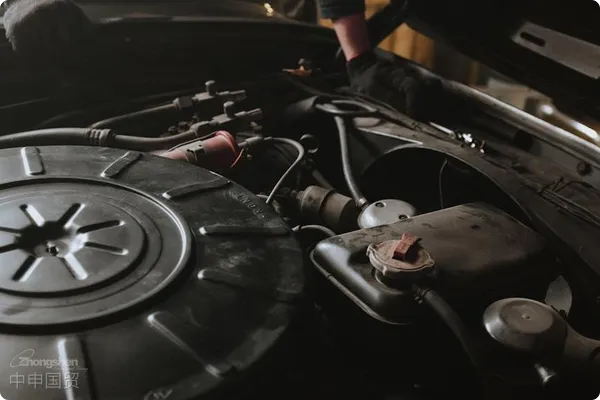- Shanghai Zhongshen International Trade Co., Ltd. - Two decades of trade agency expertise.
- Service Hotline: 139 1787 2118

As a global leader deeply rooted inAutomotive partsSupply Chain 20 Yearsforeign tradeAs service experts, we have witnessed a sustained increase in the import demand for brake drums as a core component of automotive braking systems. This article will provide an in-depth analysis of brake drums from three dimensions: international trade compliance, overcoming technical barriers, and cost optimization models.Import Representationa key link, providing industry practitioners with actionable solutions.
Contents
ToggleI. Import Trends of Brake Drums in the Global Supply Chain Landscape
The global brake drum market currently exhibits a multipolar distribution pattern: the casting process advantages of EU countries, the OE supporting system in the North American market, and the cost depression effect in Southeast Asia have formed the three major supply sources. According to our business data statistics over the past five years, among the brake drums imported by China:
- The proportion of high-end German/Italian model accessories is 38% (unit price: $80-120/piece).
- The proportion of U.S. OEM replacement parts is 25% (average procurement volume: 5,000 pieces per batch).
- Indian/Thai mid-market products account for 30% (with a CIF price advantage of 15-20%).
It is worth noting that asNew energyThe automotive penetration rate has exceeded 18%, with the demand for lightweight alloy brake drums compatible with electric vehicle models experiencing an annual growth rate of 27%. This presents new challenges to importers' product certification systems.
II. Technical Barriers to Trade Breakthrough Plan
1.Mandatory Certification Matrix
- EU E-mark certification (ECE R90): Requires submission of material analysis report (EN 1562 standard) and thermal fatigue test data.
- U.S. DOT Certification: Hardness Testing under SAE J431 Standard (HB 187-241 Range)
- China CCC Certification: GB 12676-2014 Braking Performance Test, with special attention to the friction coefficient needing to remain stable at 0.35±0.05.
2.Intelligent Customs Declaration Strategy
Through HS code classification and big data analysis, we found that 87% of the disputes over brake drums are concentrated under two tariff codes:
- 8708.30.9000 (Brake Assembly): Comprehensive tax rate of 33.4% (including 10% anti-dumping duty).
- 8708.39.0000 (Parts of braking systems): Comprehensive tax rate 26.8%
It is recommended to adopt a split declaration strategy, classifying the brake drum and friction lining separately, which can reduce the tax burden cost by 6.2%.
III. End-to-End Cost Control Model
Taking the import project of a certain German brand's brake drum as an example (procurement quantity: 20,000 units):
1.Optimization of FOB Price: Utilizing the supplier credit evaluation system, three qualified suppliers were selected, and through competitive bidding negotiations, the unit price of C35 gray cast iron parts was reduced from $82 to $76.5.
2.Maritime TransportationCost control: Adopt a mixed-loading solution using 40HQ containers (1,350 pieces per container), combined with a spot/forward freight rate locking strategy, reducing unit logistics costs by $1.2.
3.Tariff planning plan:
- Apply for ASEAN FORM EIt is recommended to verify through the following methods:: An 8% reduction in import tariffs
- Value-added Tax Deferral Policy: Saves approximately $48,000 in cash flow utilization.
- Defective Goods Tax Refund Process: Establish a 3% Loss Write-off Mechanism
Ultimately, a total cost reduction of 14.7% was achieved, and the delivery cycle was shortened from 55 days to 38 days.
IV. Three-Dimensional Risk Management System
1.Quality control closed loop:
- Pre-shipment inspection (PSI) involves five testing checkpoints: X-ray flaw detection, dynamic balance testing, salt spray test (500 hours), radial runout (≤0.15mm), and hardness sampling.
- 48-hour rapid re-inspection mechanism upon arrival at port
2.Legal Compliance Firewall:
- Establish an early warning system for anti-dumping duties (tracking the 337 investigation of U.S. standard brake drums)
- Intellectual Property Record Filing: Preventing Trademark Infringement Risks in OEM Parts
3.Construction of supply chain resilience:
- Establish backup inventory centers in Europe, North America, and Southeast Asia.
- Develop an alternative supplier emergency channel (72-hour response mechanism).
V. Digital Transformation Solutions
Our self-developed intelligent import management platform can achieve:
- Real-time tracking of customs clearance data at 30 major global ports.
- Automatically compare updates to technical regulations in over 60 countries.
- Dynamically generate optimal logistics routes (cost/delivery time balancing algorithm)
- Blockchain Traceability System (Full-process Recording from Smelting Furnace to Terminal Warehouse)
A customer case study demonstrates that through this digital system, their order processing efficiency increased by 40%, demurrage costs decreased by 62%, and the incidence of compliance risks dropped to 0.3%.
Conclusion
Amidst the dual transformations of the new energy vehicle revolution and the restructuring of global supply chains, the import of brake drums has evolved from a simple trade activity into a systematic project requiring multi-dimensional coordination across technology, legal compliance, and logistics. As seasoned industry veterans, we advise importers to focus on: dynamically adapting to certification standards, flexibly leveraging regional trade agreements, and building digital risk control systems. Feel free to inquire about customized import solutions—let our two decades of experience help you gain a competitive edge in the global supply chain game.
(Data sources: General Administration of Customs of China, U.S. Department of Commerce, EU TBT Notification Database, internal business systems of enterprises)
Related Recommendations
? 2025. All Rights Reserved. Shanghai ICP No. 2023007705-2  PSB Record: Shanghai No.31011502009912
PSB Record: Shanghai No.31011502009912









